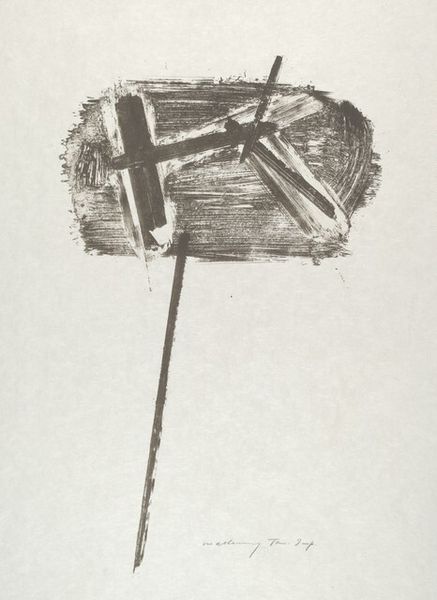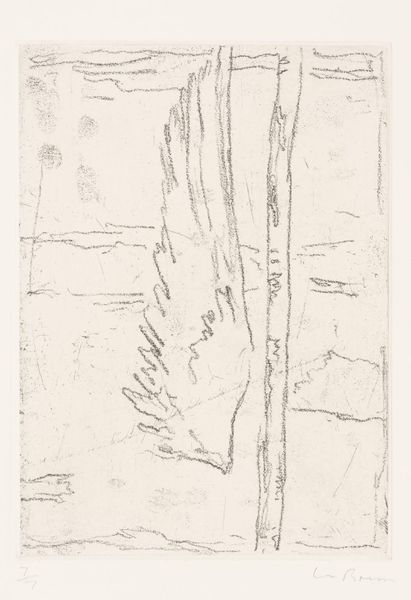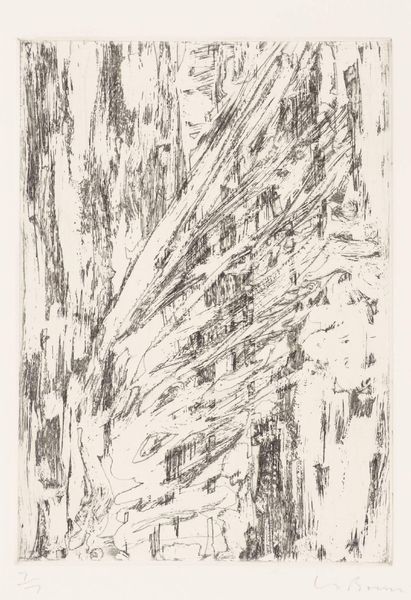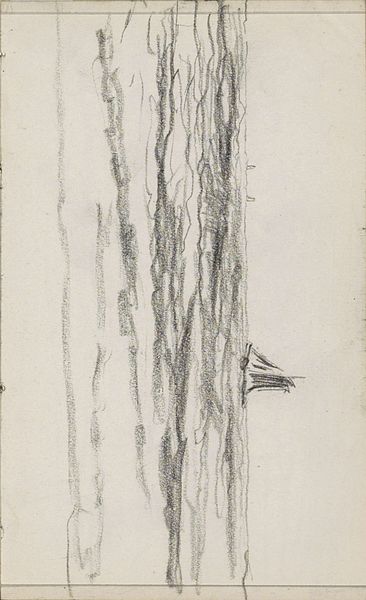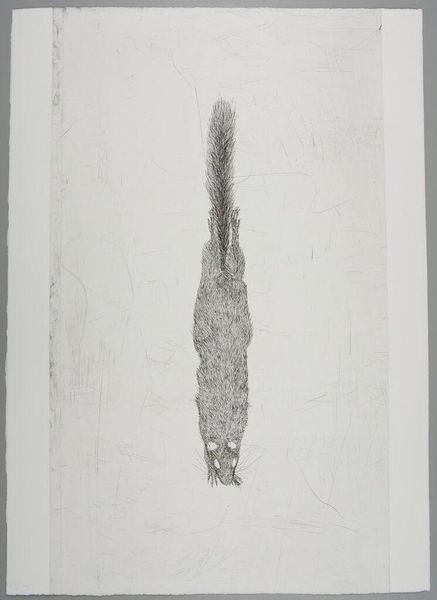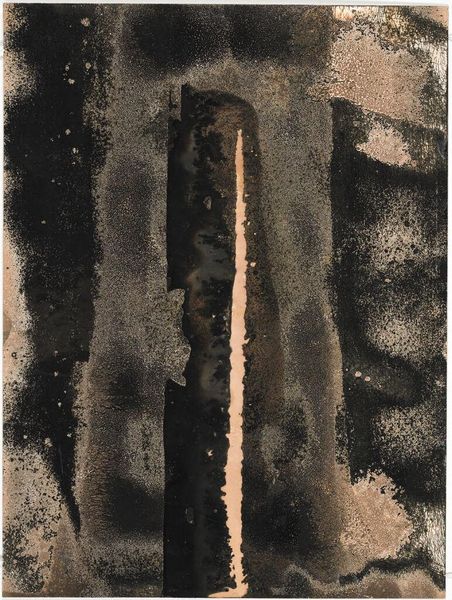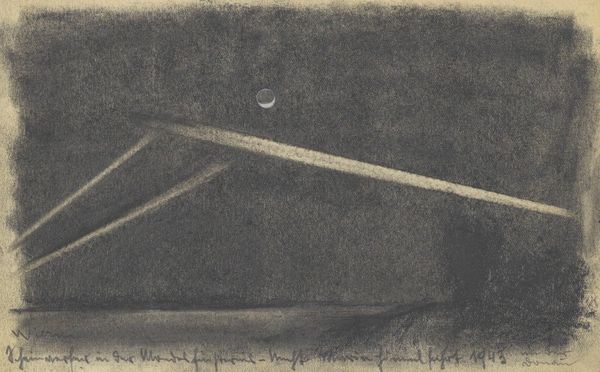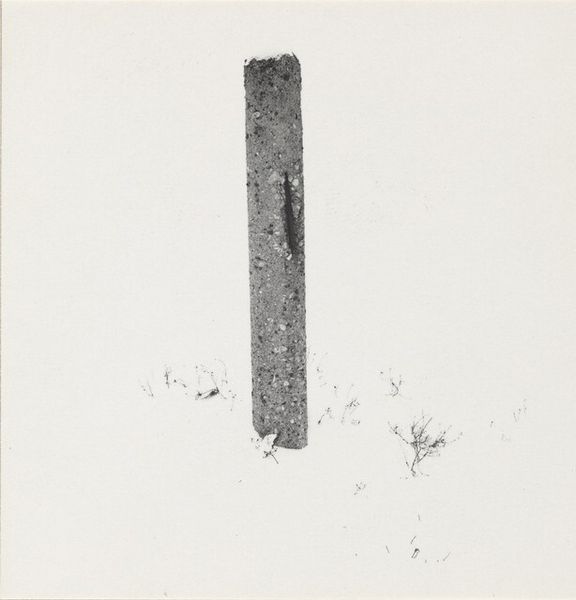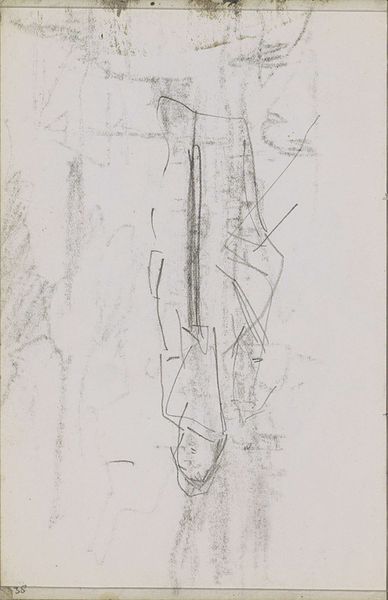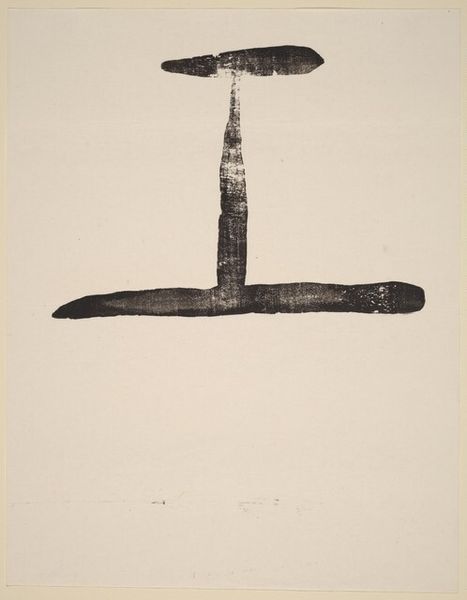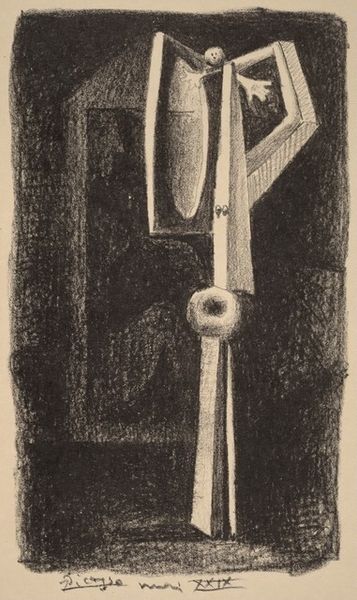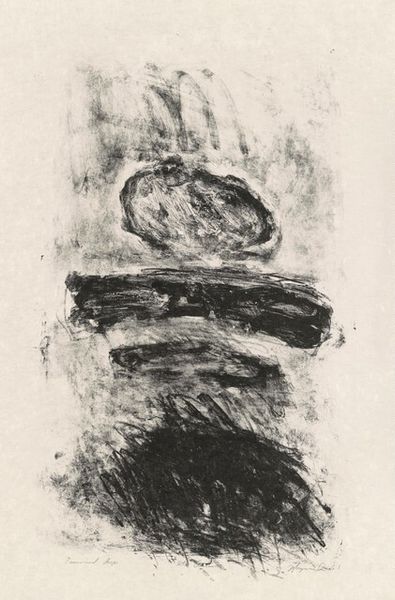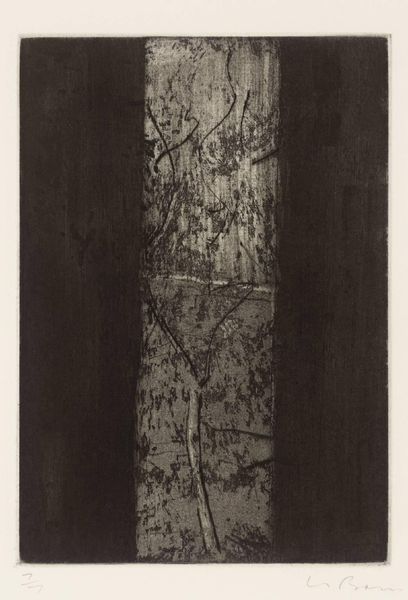
drawing, print, pencil, graphite
#
pencil drawn
#
drawing
# print
#
pen sketch
#
pencil sketch
#
pencil
#
abstraction
#
line
#
graphite
Dimensions: image: 84.07 × 61.72 cm (33 1/8 × 24 5/16 in.) sheet: 132.08 × 97.79 cm (52 × 38 1/2 in.)
Copyright: National Gallery of Art: CC0 1.0
Curator: Here we have Joe Goode’s "Screwdriver" from 1962, a graphite drawing that initially strikes me with its intense texture and the focused rendering of a common tool. Editor: The tool emerging out of the gloom seems imbued with this strange, almost aggressive utility. It brings forth this idea of labor, of forcing change, of the very manual exertion required in so much of life—both historically and in our current landscape. Curator: Absolutely. The way Goode employs the pencil to build up this dense, almost chaotic background—it emphasizes the contrast between the mechanical precision of the screwdriver and the raw, physical effort implied by its use. We are also confronted with its seriality as art object when thinking of it as a drawing, as print, and the multiple steps it takes to produce a final outcome. Editor: And what does that say about accessible modes of artwork at the time, that the artist would want to point toward accessible forms of labor—or engage directly in a simple graphite process. It also hints at themes of production and consumption, even masculinity tied to creation—who wields this power tool and to what end? Are we complicit, admiring from a comfortable distance, or do we critique what labor can yield? Curator: I think that's really insightful. By isolating this single tool, Goode invites us to contemplate the implications of these tools within a consumer-based economy and within a post-war American landscape hungry for innovation, where the means of making is something to consider at large scale. Editor: Thinking about Goode situating himself amongst the pop-culture references present in other West Coast artists of his time, I find this specific engagement with tools extremely poignant as these have, too, evolved through material culture and production chains linked inextricably to both historical oppressions, capitalism, and now our new digitized forms of production. Curator: Yes. The print’s simplicity becomes incredibly complex under that lens. In the end, "Screwdriver," asks us to inspect not only its physical manifestation but to ask very specific questions as to the function, purpose, labor, and materials that surround not only the tool it represents, but the artist, the time period, and perhaps ourselves in the long view. Editor: It's a powerful thing. By dissecting objects in this way, he provides entry points that spark new dialogues on cultural systems and the labor that brings things into being.
Comments
No comments
Be the first to comment and join the conversation on the ultimate creative platform.
